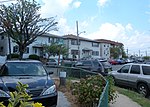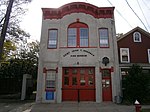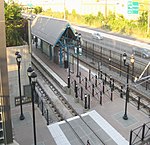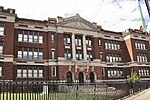Marist High School (New Jersey)
Marist High School was a private Roman Catholic co-educational college preparatory secondary school located in Bayonne, New Jersey, United States, and operated by the Marist Brothers of the Schools, an international religious congregation of educators with schools in over 70 countries. It was located within the Roman Catholic Archdiocese of Newark. The school had been accredited by the Middle States Association of Colleges and Schools Commission on Elementary and Secondary Schools since 1978.As of the 2017–18 school year, the school had an enrollment of 309 students and 24 classroom teachers (on an FTE basis), for a student–teacher ratio of 12.9:1. The school's student body was 42.4% (131) Black, 20.7% (64) Asian, 16.5% (51) White, 13.9% (43) Hispanic and 5.5% (17) two or more races.Despite plans to convert it into a middle school and sports complex, the school was demolished in 2022 due to a lack of funds for lead and asbestos remediation.
Excerpt from the Wikipedia article Marist High School (New Jersey) (License: CC BY-SA 3.0, Authors).Marist High School (New Jersey)
Leo Slyvious Road,
Geographical coordinates (GPS) Address External links Nearby Places Show on map
Geographical coordinates (GPS)
| Latitude | Longitude |
|---|---|
| N 40.690555555556 ° | E -74.106111111111 ° |
Address
Marist High School
Leo Slyvious Road
07002
New Jersey, United States
Open on Google Maps









